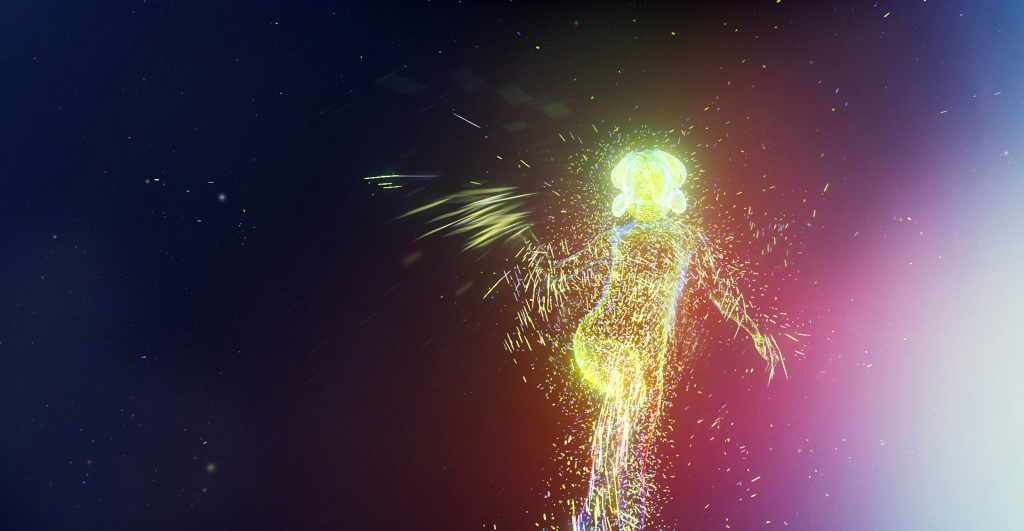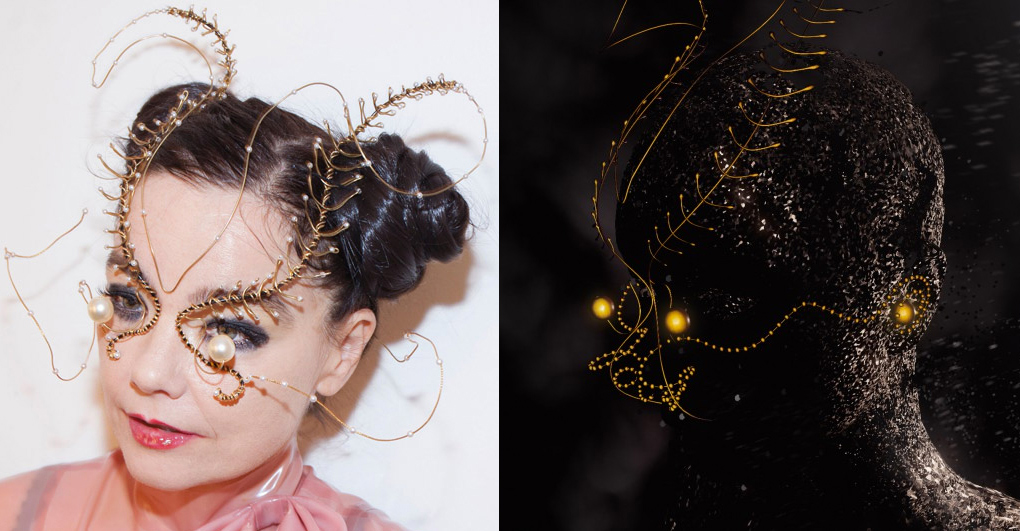Bjork Digital is almost Bjork: The Theme Park. The installation, which opened in Tokyo earlier this week, includes a movie theater featuring a two-hour-long showcase of the artist’s videography. Around the corner from there, you’ll find several tracks from the album Vulnicura have been transformed into VR experiences. Farther down the hall, you can play around with the album-turned-music app from Bjork’s Biophilia album. The 18-day installation opened to the public this week, with Tokyo being the second stop on a world tour that also includes Europe and the US. I went for a visit and came away thinking that no other musical artist is pushing (or perhaps dragging) virtual reality forward more than Bjork. She’s working on more VR tracks too — this is really just the start.
I asked Paul Grey, Bjork Digital‘s producer, why the musician decided to work with virtual reality. “[VR] is a challenge,” he said. “She continues to challenge herself, using this very new tool. But it’s also about bringing a new experience: It’s not a music video, or a live concert. Virtual reality is an intimate experience. Bjork wanted to bring people closer to the artist.
“Take “Stonemilker,” for example,” he continued. “It’s 360-degree video, so there’s just the camera and Bjork. There’s no crew. Bjork is stood. Alone. [The intimacy] is something you wouldn’t get on a single screen.” Your mileage may vary, but most will have some kind of emotional reaction — even if it’s simply mild discomfort at the isolated nature of the piece.
“Stonemilker,” shown above, is the only experience from the showcase that you can try yourself (if you own a Gear VR or Google Cardboard headset, that is). It’s also the simplest. The first VR experience was recorded on a bundle of action-cams stuck together. The camera doesn’t move, but Bjork does, cavorting around you as you stay rooted to the same spot. While watching the performance is a personal experience, the tour is done in groups. We were all guided into a darkened room, given a Gear VR headset and some Bowers & Wilkins headphones. The song began when we strapped the headset on.
This is the same experience she showed off at the Museum of Modern Art in New York last year, but it shows the roots of Bjork’s experiments in the new medium. She has a rich history of working with famed designers and filmmakers like Michel Gondry, Spike Jonze and many more. However, Bjork Digital required a different kind of technical expertise. The showcase has also involved established VR companies and worked with the likes of Rewind, River Studios and Dentsu Labs.
I found the first experience certainly tender and intimate, and that’s probably what made the second experience seem all the more intense: Welcome to the inside of Bjork’s mouth.
Director Jesse Kanda and his team used a miniaturized version of the camera ball used in “Stonemilker,” but for “Mouth Mantra,” the team also ended up making a physical model of Bjork’s mouth, given the need for more filming — and the awkwardness associated with having a bunch of cameras down your throat (producer Paul Grey challenges anyone to differentiate between the two, however). The song, like the experience, is pushier, scarier — and a little bit more nauseating. It’s still not as bad as playing Resident Evil 7 in VR, but, perhaps intentionally, it’s more aggressive than “Stonemilker.”
The most recent creation, “Not Get,” moves the experience to HTC Vive from Gear VR. Honestly, the more advanced hardware made it far more like an experience and less like a music video spread 360 degrees.
This is the second public appearance for “Not Get” VR; it made its debut in Sydney. Bjork was captured and replicated through high-resolution 3D scans, on-location motion capture and “videogrammetry,” which was then paired with real-time spatial audio. As I craned my neck and moved around the sparkly outline of Bjork, the voice came from within the glowing projection. While technically more sophisticated, it doesn’t take complete advantage of the HTC Vive: There are no controllers, and there’s not much in the way of interaction; this is still a performance. That said, the outline of contorting light particles is mesmerizing.

Not being able to control what happens inside the “Not Get” VR installation was done for simple, pragmatic reasons: “The trick is [striking a balance between] cutting-edge technology, yet keeping it completely robust. It has to work all day,” Grey said. “This is only the second time it’s been shown!” (The “Not Get” presentation is actually the largest simultaneous HTC Vive VR installation.) “In the future, I believe [interactivity] is the direction things will go in.”
Bjork is a very visual music artist; the exhibition also included roughly two hours of her music-video history, played inside a huge theater alongside the VR experiences. It acts as a primer for how Bjork has pushed the boundaries of technology in her videos, all while filing itself away as the part that’s past. The musician has explained that although she calls on technical expertise, she herself is no tech dilettante. She described working on Biophillia and Vulnicura in an interview with Fast Company:
“I only did that album [Biophillia] because I felt like I had content that made sense, that could relate to the technology. It can’t just be working with the gadget for the sake of the gadget. But also it’s about budgets. You can do apps cheaply. Apps was kind of punk, actually. It was like starting a punk band again. Filming for Oculus Rift is not.”
In fact, the night before the exhibition even opened, Bjork previewed the next track being transformed into something even grander than the original audio. In front of a small audience, she performed Vulnicura‘s “Quicksand” wearing a suitably outlandish mask, all while surrounded by projection lighting and cameras. The cameras captured what was happening in front of the audience, while computers added layers of digital effects. This wasn’t virtual reality, but more augmented reality — a seamless projection of a virtual world in the real one, without the need for a clammy VR headset. (It’s hopefully what all VR will be like in the future.)

Unfortunately, the performance (broadcasted live on YouTube as a 360-degree video), was removed from the internet soon after the performance finished. The organizers say the video will resurface (with some layers of postproduction) in the future. Bjork’s work transforming this intimate breakup album into a virtual experience continues, and this performance was only the latest milestone on that front. By the time the Digital tour reaches the West, it’s likely there will be even more VR performances for fans to try.
(28)
